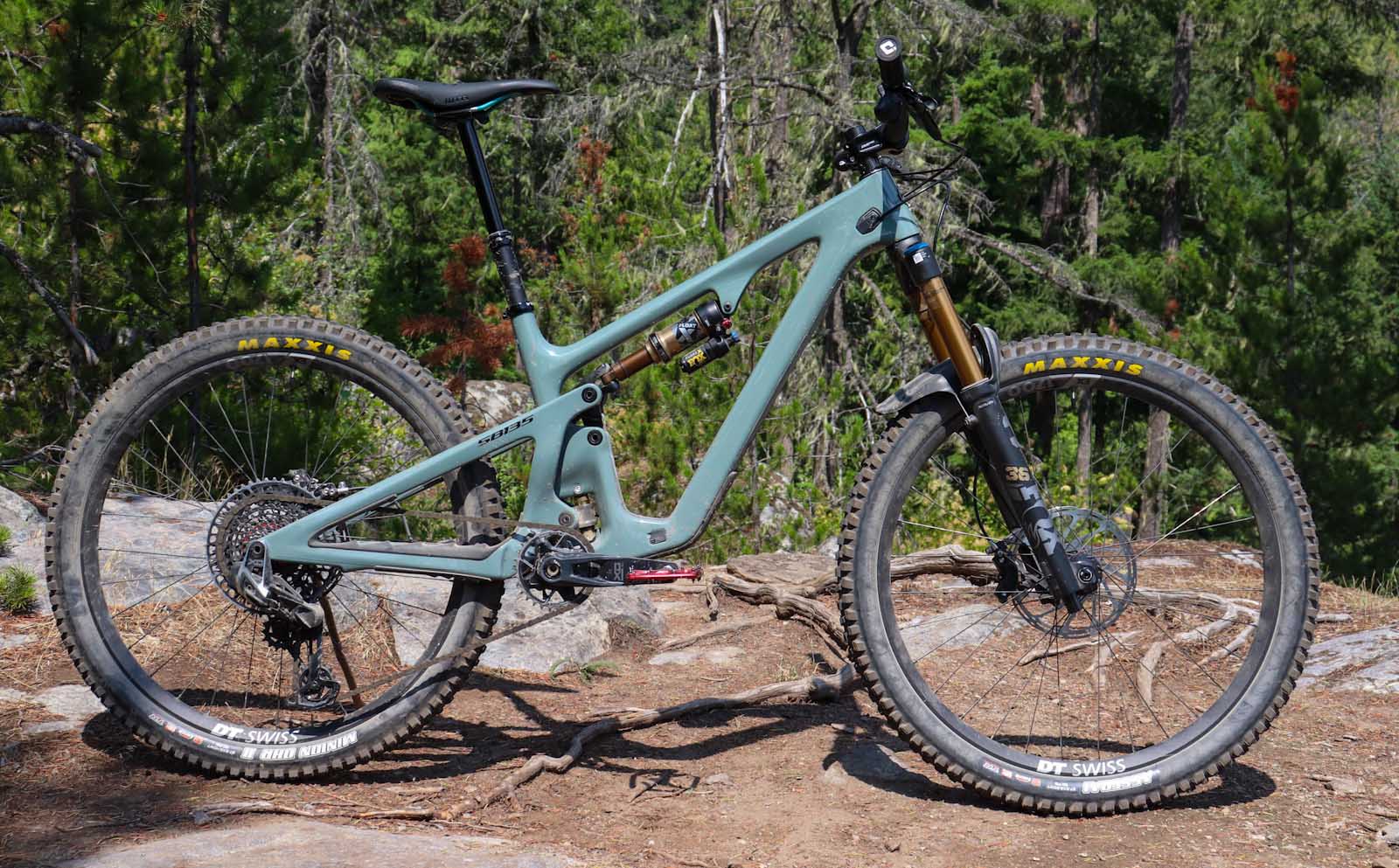Yeti sees a place in today’s world for a playful 27.5” wheeled trail bike, so they created the SB135.
This versatile MTB has everything it needs to handle technical trails, but it keeps its dimensions on the smaller side allowing it to rail tight corners, whip around pumptracks, and jump with a lot more agility than a big ol’ 29er. For those who use their MTBs as all-purpose bikes (or for smaller riders), bigger is not necessarily better.
Below, I’ll cover my impressions of how the Yeti handles itself on-trail, but check out my launch article for all the details and specs on the new SB135s.
2023 Yeti SB135 TURQ TLR Transmission T3 – Basic Specs:

All models of the new SB135 boast full carbon frames, but the TURQ TLR Transmission T3 model I’m testing is built from Yeti’s higher-end TURQ carbon fiber (which is lighter than the C Series carbon used on lesser models).

The SB135 provides 135mm of rear travel via Yeti’s Switch Infinity suspension platform, and Yeti recommends every rider check out their suspension setup calculator to get dialed in. Yeti does tune their shocks for each frame size, and at 145lbs the medium frame’s tune was pretty much dialed for me.
Up front, you’ll find 150mm forks on standard models but given the rough and steep terrain in my area, I tested the beefier ‘Lunch Ride’ build with a 160mm fork. While the SB135 was purposefully designed around its 27.5” wheels, the bike can be mulleted with a 29” front wheel and fork if you desire.
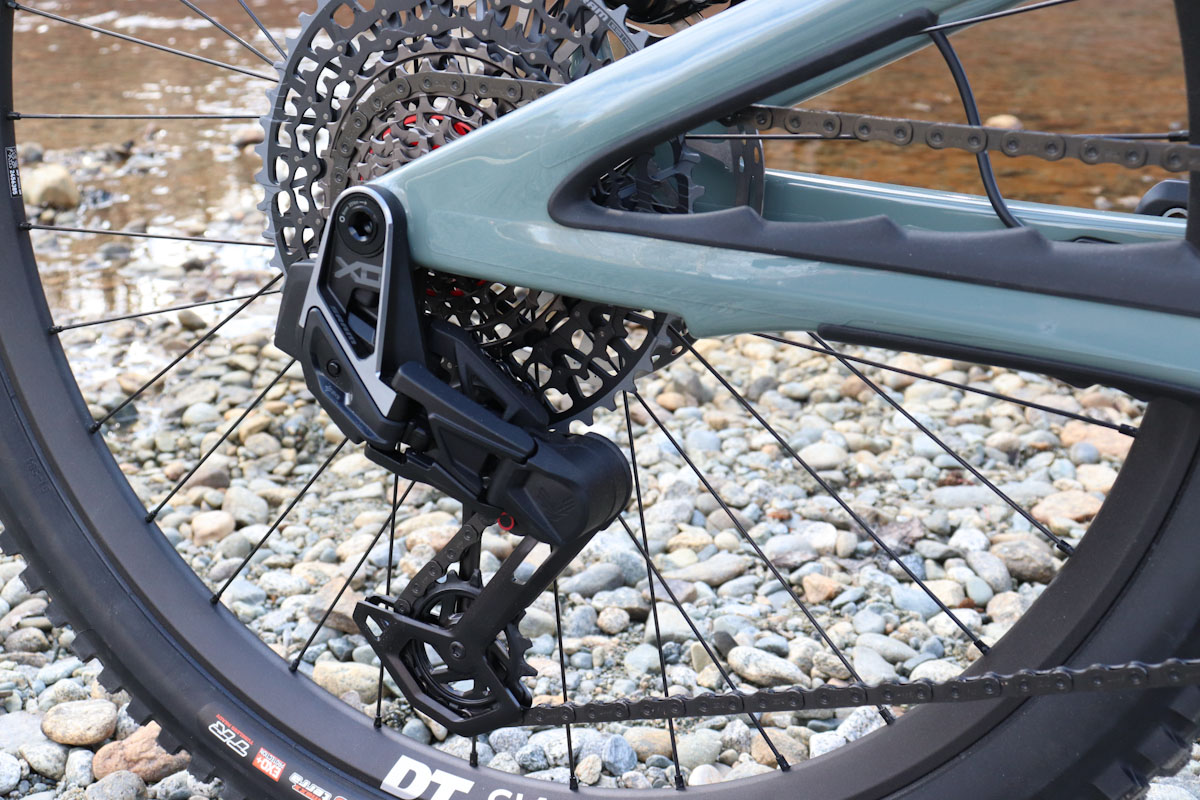
The updated SB135 frames use SRAM’s UDH derailleur hanger and are compatible with SRAM’s new T-Type transmissions. I was stoked to try one out on this bike, and was not disappointed!

The size medium SB135 TURQ TLR Transmission T3 weighed exactly 33 lbs with pedals.
Geometry/Fit:
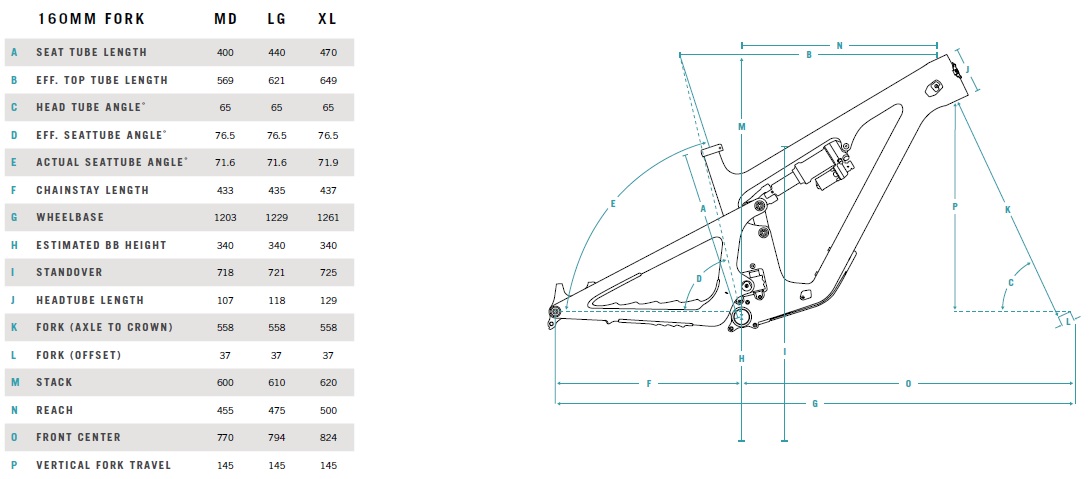
With a reach of 455mm on a medium frame (on the Lunch Ride build; it grows to 460mm on the standard models), the SB135 is not particularly long for a modern trail bike. That said, 455mm is not that short and the bike doesn’t feel like it lacks anything in front-end length or wheelbase when you’re riding trails. Out back the 433mm chainstays strike a mid-point that ensures a decent amount of stability without losing the snappy handling Yeti intended for the SB135.
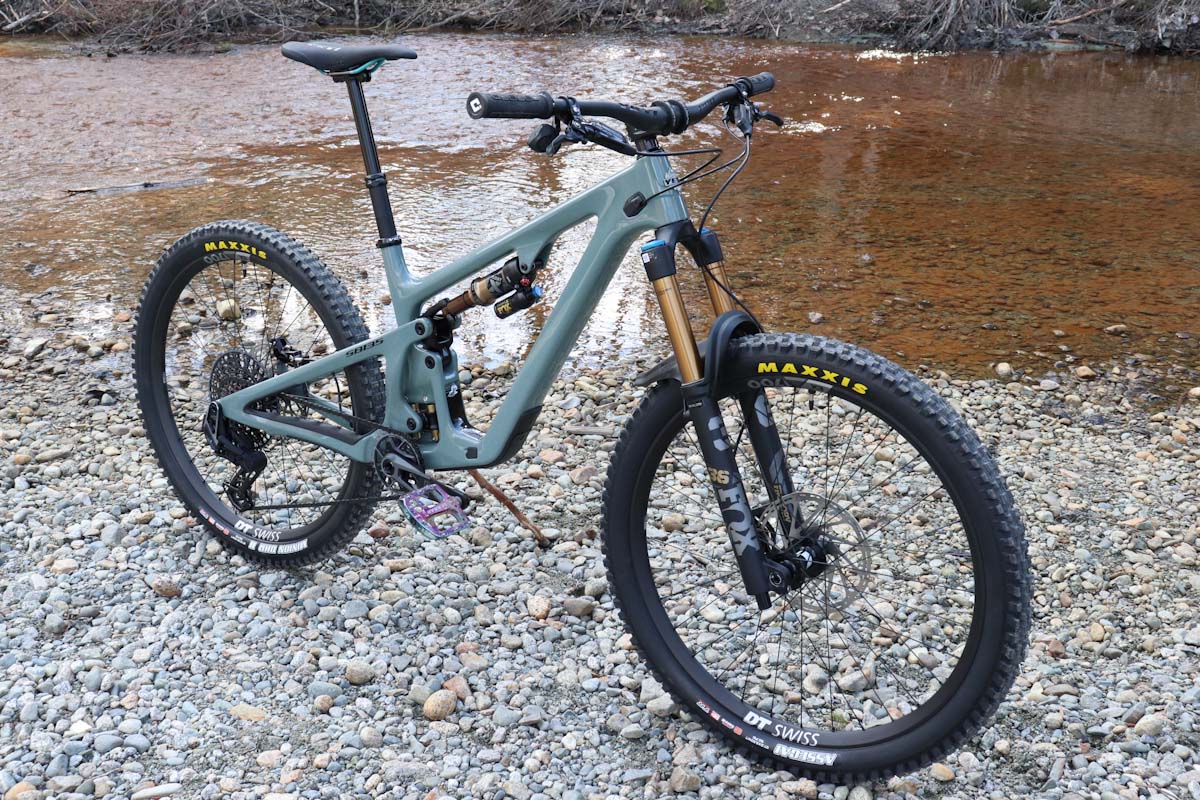
With a 65° head tube angle (with the 160mm fork), the SB135 is also just as slack as you’d want a mid-travel trail bike to be. To ensure solid pedaling prowess, the effective seat tube angle is a steep 76.5°. At 340mm the BB height is low enough to provide a stable ride, but I seemed to avoid pedal strikes quite easily with the SB135.
The shorter travel and 27.5” wheels place the SB135 in the playful/whippy category. Still, as far as angles and measurements go, it is basically in line with today’s trail bikes. It definitely feels smaller than a 29” enduro bike, but not too short, small or steep to shred gnarly singletrack.
Climbing:
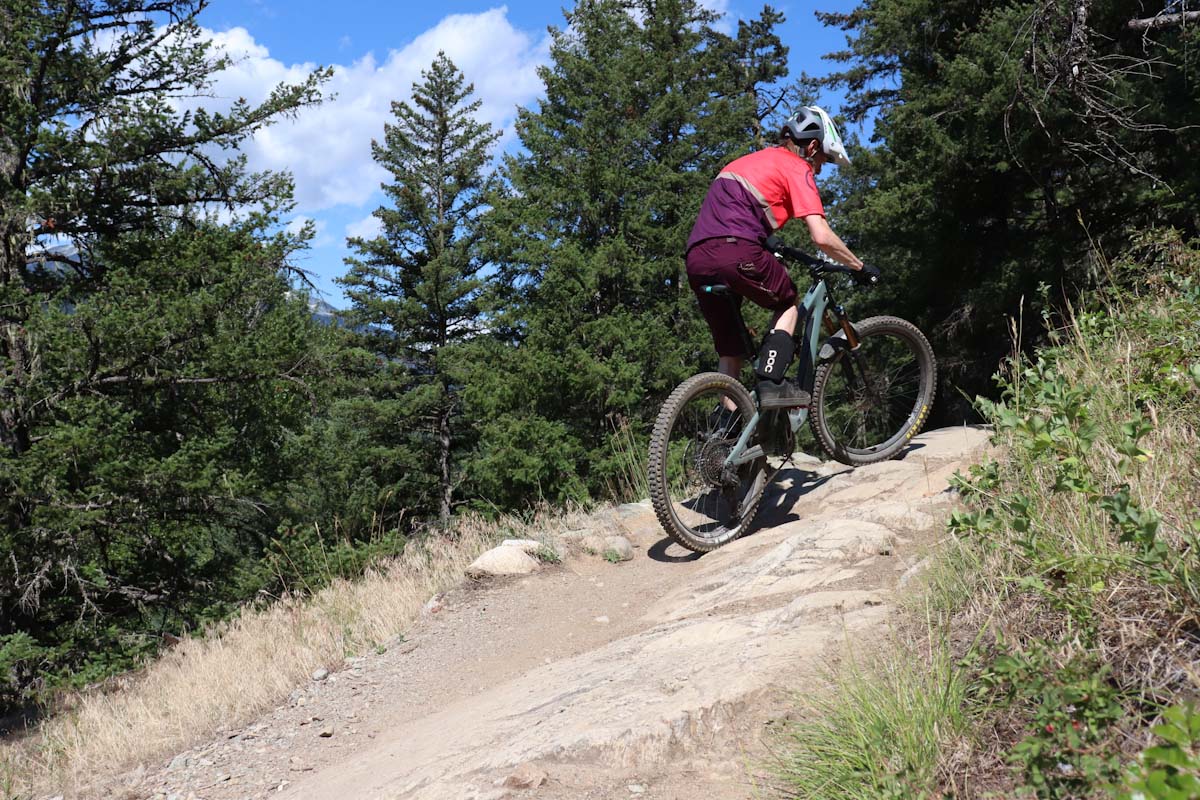
The SB135 is definitely a solid climber. With the shock in firm position, the bike strongly resists pedal bob and doesn’t wallow in its travel on anything from paved roads to moderately bumpy singletrack. As I recovered from a leg muscle injury, I spent many rides cruising dirt roads and gravel pathways with the SB135, and on this terrain with the shock firmed up the linkage barely flexed under pedaling efforts.
On bumpy singletrack climbs, the shock (in firm mode) resists pedaling forces very well but will move for trail inputs, which provides a great balance of traction and efficiency. Pedaling efforts are very well supported by the shock/linkage, yet the shock will use more than half of its travel on a climb to keep the rear tire glued to roots and rocks. In firm mode, you get a fairly aggressive feeling climb out of this bike; its 135mm travel is enough to ensure good grip but you will feel the 27.5” rear wheel lumping up and over obstacles instead of plowing through them.
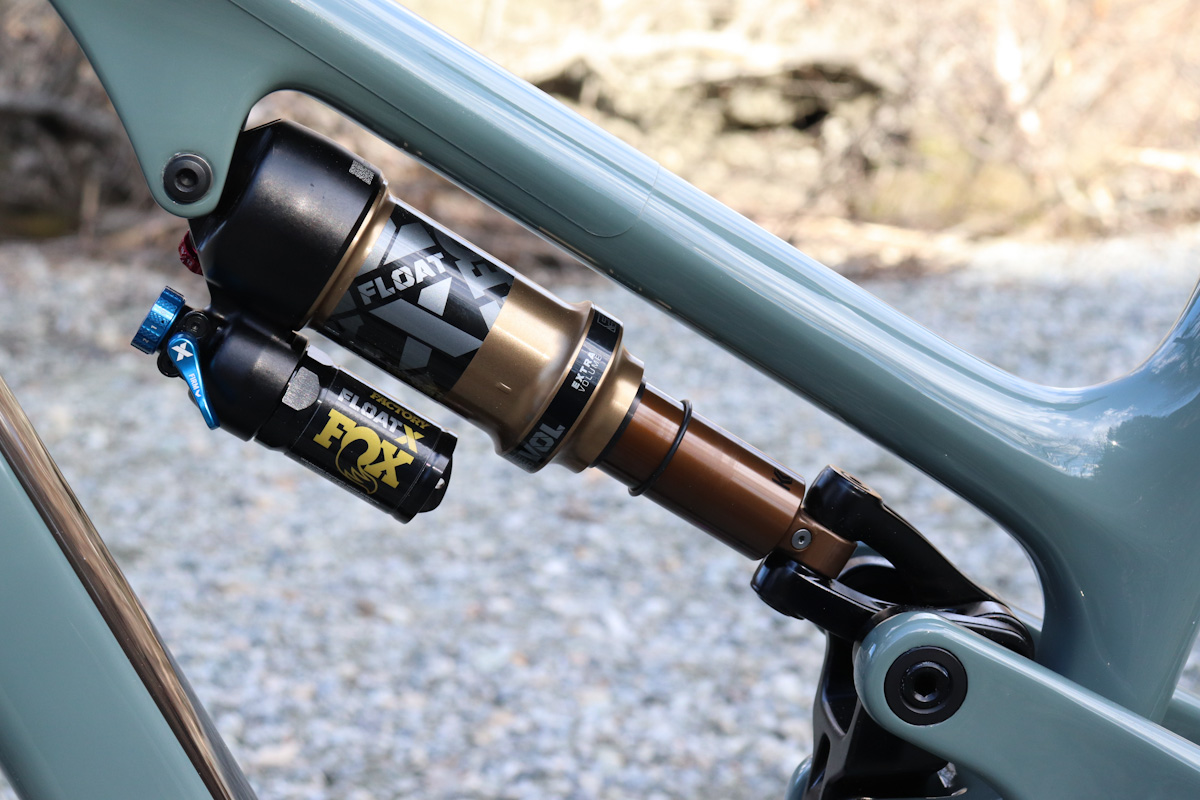
If a soft ride is your preference you can climb with the shock left open: In the open position, the bike will bob more and with some stand-up pedaling the shock will dive a bit. You are giving up some pedal support in exchange for increased traction or ride comfort, but this mid-travel machine can still climb pretty well with no help from the shock.

The SB135 is just long and slack enough to provide a well-balanced, ‘between the wheels’ feeling and solid traction at both ends. I noticed the rear wheel feeling slightly light on a few steeper uphill bursts, but I never spun out. I do enjoy how much traction longer rear ends provide on steep climbs, but long chainstays wouldn’t suit the SB135’s playful character, so I like how Yeti’s dimensions keep this bike trail-capable yet agile.
One advantage of the Yeti’s small-ish frame dimensions is it’s easy to shift your body forwards or backward over the bike when required. The SB135’s reasonable weight also makes it easy to heave up over big roots or uphill steps during a climb. The 65° head tube angle was a wise choice for the SB135; it is slack enough to handle steep downhill trails yet keeps the handling fairly nimble for climbing tight switchbacks.
Descending:

Following Fox’s recommendations I achieved a proper rear shock setup right away. After a bumpy descent, I’m typically using 90-95% travel. The linkage does ramp up substantially close to the end of its stroke, which provides ample bottom-out resistance for rough trails, but it’s not so progressive that I couldn’t reach full travel on a drop landing or a hard compression. As a lighter-weight rider, I’m happy when a bike isn’t too progressive for me so I think Yeti hit the nail on the head with their suspension tuning.
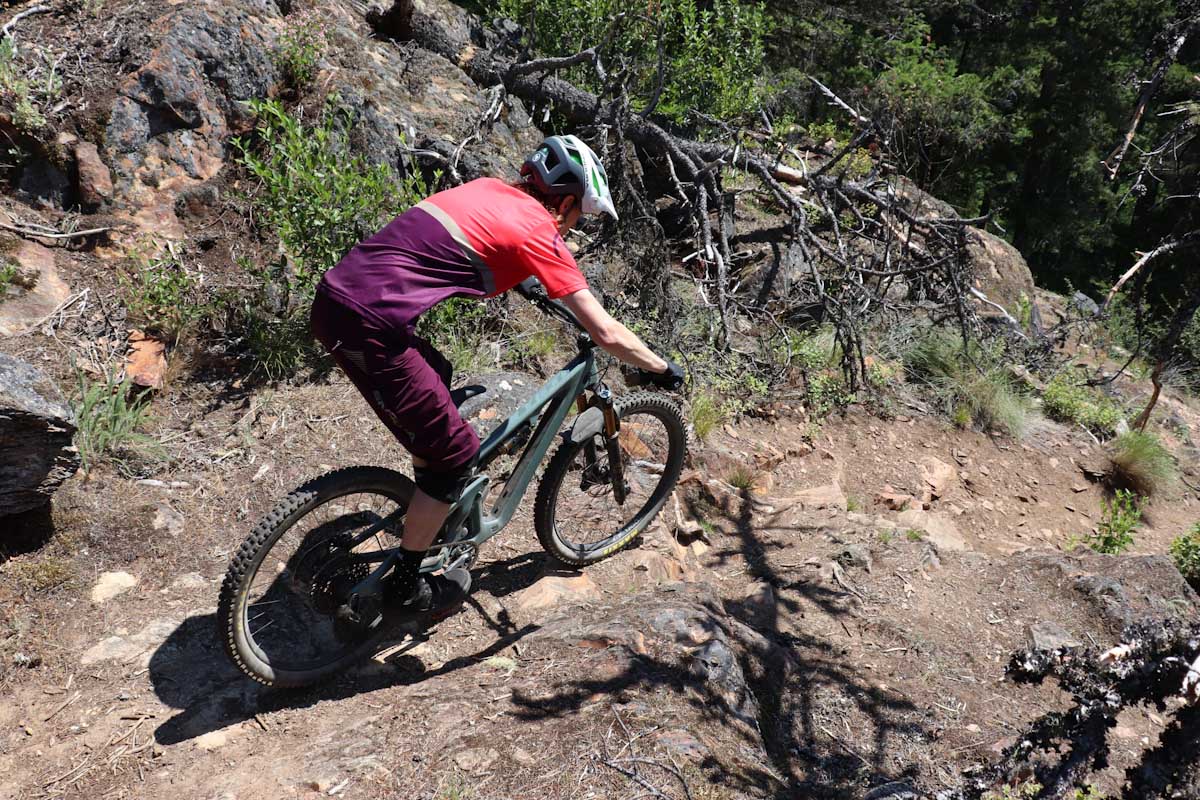
The SB135 has less travel than I’m used to riding (150-170mm is typical for B.C.’s Sea-to-Sky Corridor). Given that Yeti’s SB series of MTBs offers several travel options, I don’t think Yeti was shooting to make the SB135 one of those bikes that feels like it has more travel than it does – it’s supposed to be your mid-travel option and it rides accordingly. That said, I think Yeti’s linkage does a great job of rounding off hits of any size, so the SB135 plows through rough terrain a bit better than I expected.
Most of the way through the travel the shock feels fairly linear, so the SB135 gives you the squish you need to smooth out small and medium-sized bumps nicely. Bigger hits are only limited by travel; the linkage still dulls big impacts nicely but it simply can’t absorb what a 150mm or 160mm bike can. Yeti’s Switch Infinity linkage reminded me of Trek’s ABP linkage (which I think is excellent), but a little more poppy and a little less plowy through the rough.

A playful bike like the SB135 should offer good mid-stroke support, and this bike definitely pops nicely (and predictably) off bumps or jumps and joyfully springs out of berms and tight corners. Yeti has delivered the lively ride you’d hope for on a mid-travel bike like this. The wheelbase is short enough to make cornering downright dreamy, so I really enjoyed railing the SB135 through twisty trails. Yeti increased the new SB135’s frame stiffness, but didn’t go nuts. Bearing in mind that frame stiffness is size-specific, I found the medium stiff enough to stay pointed through rocky trails, but there is some forgiveness keeping the ride from feeling excessively harsh. I hopped on a Trek Fuel EX for one comparison ride, and the Trek’s carbon frame is definitely stiffer and less forgiving.
Components:

As for components, let’s start with the SRAM XO Eagle T-Type transmission. Right away I thought “If I can get through this whole review without ever adjusting this drivetrain, I’m going to be really happy,” and the T-Type came through. After zero out-of-the-box setup, I only experienced some slight skipping in two different gears during all my test rides, and neither gear became consistently problematic. I easily went weeks without any rough gear changes, and shifting was always fast and precise. I’m also impressed with battery life, as I’ve only recharged the derailleur battery once.

I don’t love the ergonomics of the new T-Type shifter pod, but I got used to it quickly. I loved the first AXS shifter, because it keeps its paddles in the same place as SRAM’s cable shifters (which I find perfectly ergonomic). The compact shifter pod looks great, but I think putting both shift buttons on the same plane is a flawed concept – I’d be happier with one button higher up and further back than the other. That said the pod wasn’t annoying or difficult to use, just different from what I’m used to… and I will give SRAM credit for making the pod’s mount highly adjustable. I did nearly kill a battery in the shifter, but even with the battery light flashing red, it got me through quite a few rides.
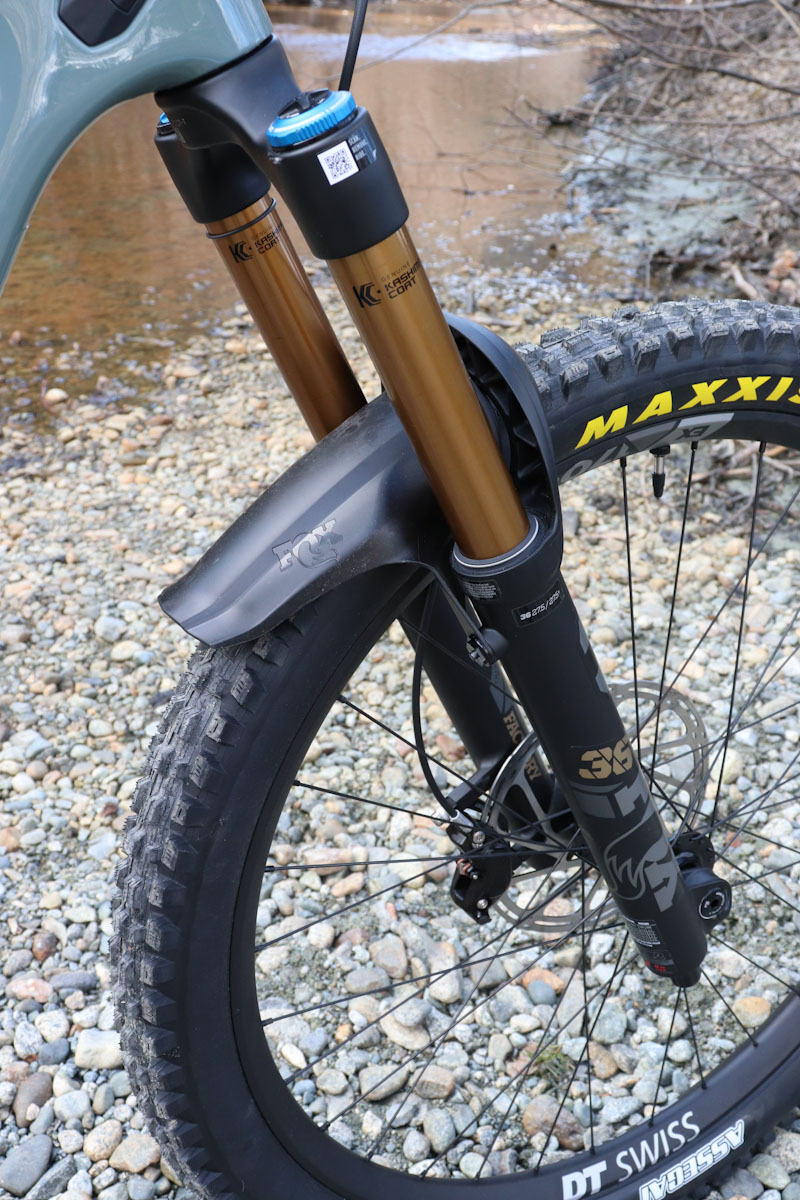
FOX’s suspension components did their job well. I’m happy Yeti stuck with a 36mm stanchion 160mm Fox Factory 36 Grip 2 Fork, which holds stiff through rough terrain. I was glad to have the longer ‘Lunch Ride’ fork, as it’s definitely suitable for my local trails, and getting the integrated fender included on the stock bike is a nice touch. I’ve described the ride qualities of the Fox Factory Float X rear shock above, and I had no mechanical issues with it or the fork.
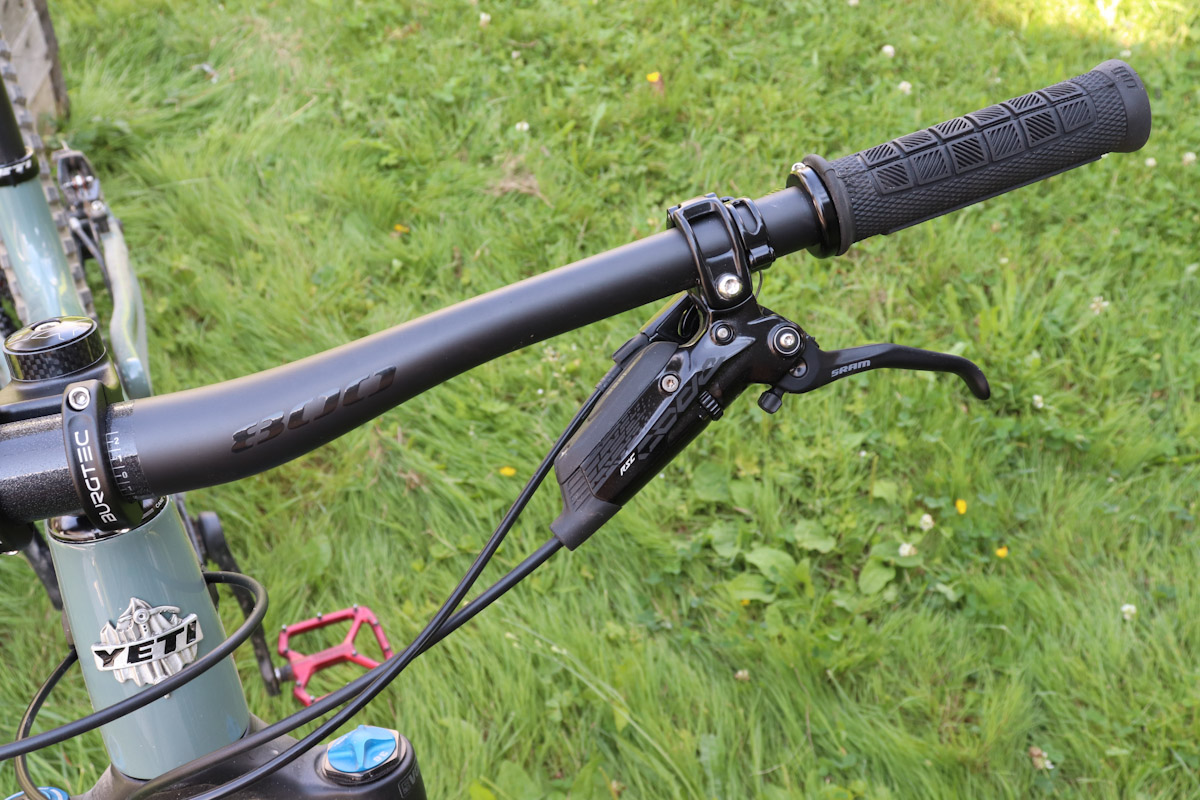
I was pleased with the Lunch Ride build’s wide 800mm Yeti carbon handlebar (760mm bars are stocked on non-Lunch Ride builds), and the bigger brake rotors. With 200mm rotors, the Code RSC brakes were actually a bit grabby at times, but mostly felt like typical SRAMs with great modulation and tons of power.
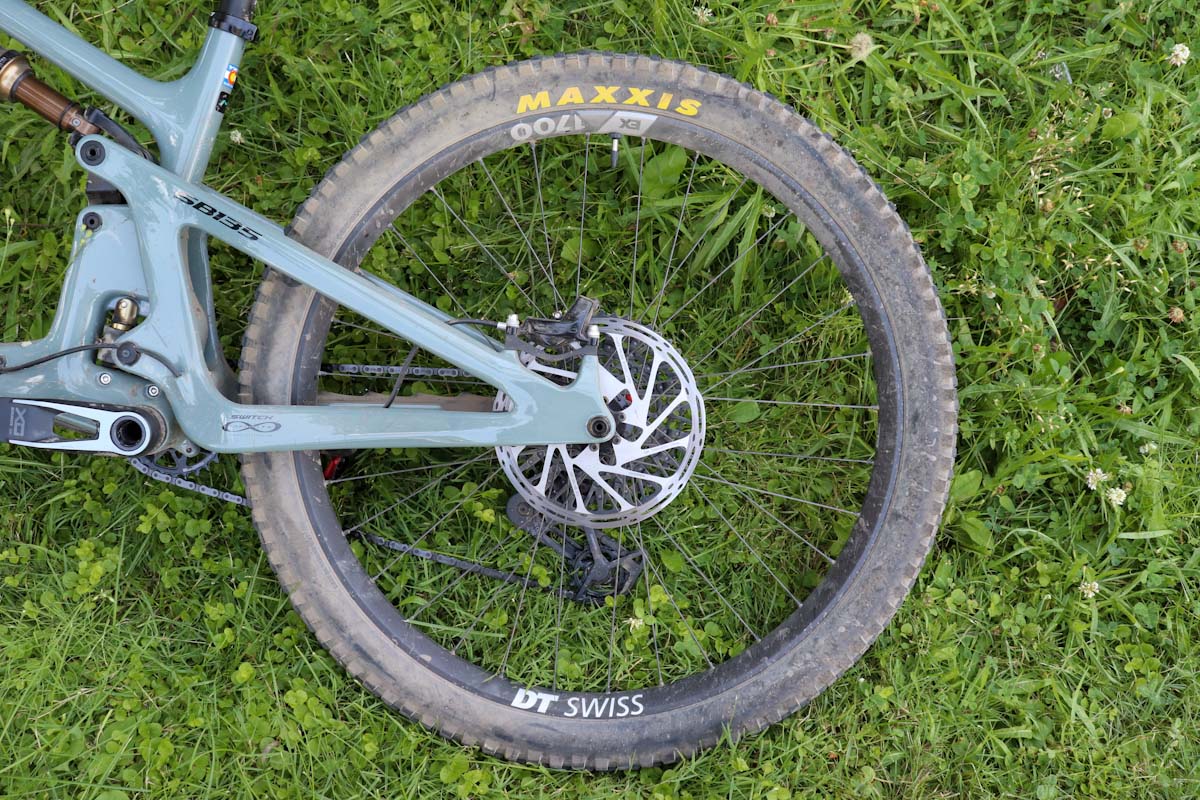
The SB135’s DT Swiss EX1700 wheels held up extremely well, with no warping or hopping at all to report. Of course, the Maxxis Assegai/Minion tire combo provided the solid grip they’re known for and survived my test puncture-free.
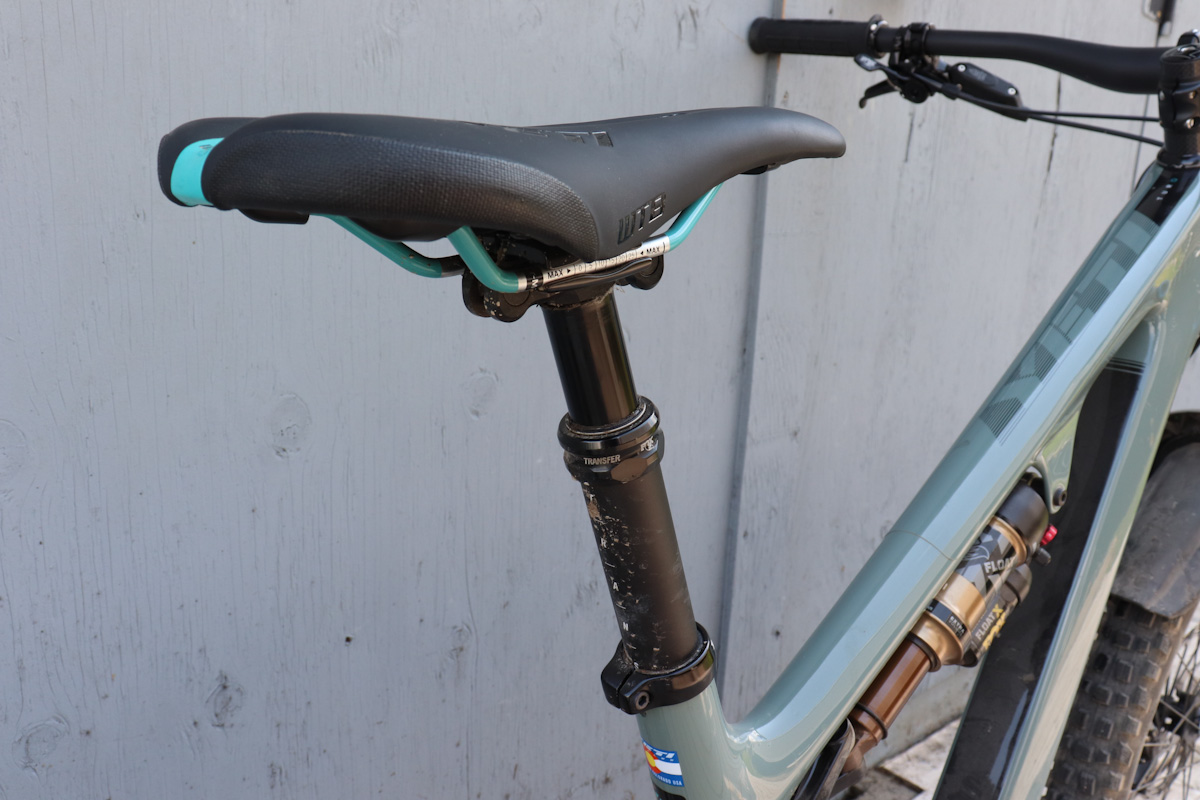
The Fox Transfer dropper post has proved reliable. It’s occasionally a bit sticky on the first lift of a ride but it always works fine afterward. Also, getting a 175mm post on a medium frame should keep any rider happy. WTB’s Silverado Custom saddle is familiar to and friendly with my behind, so I wouldn’t rush to swap it out.

The Yeti SB135 TURQ TLR Transmission T3 sells for $9500. Frame color options are Cherry, Turquoise or Rhino (grey), and sizes M/L/XL are available.
